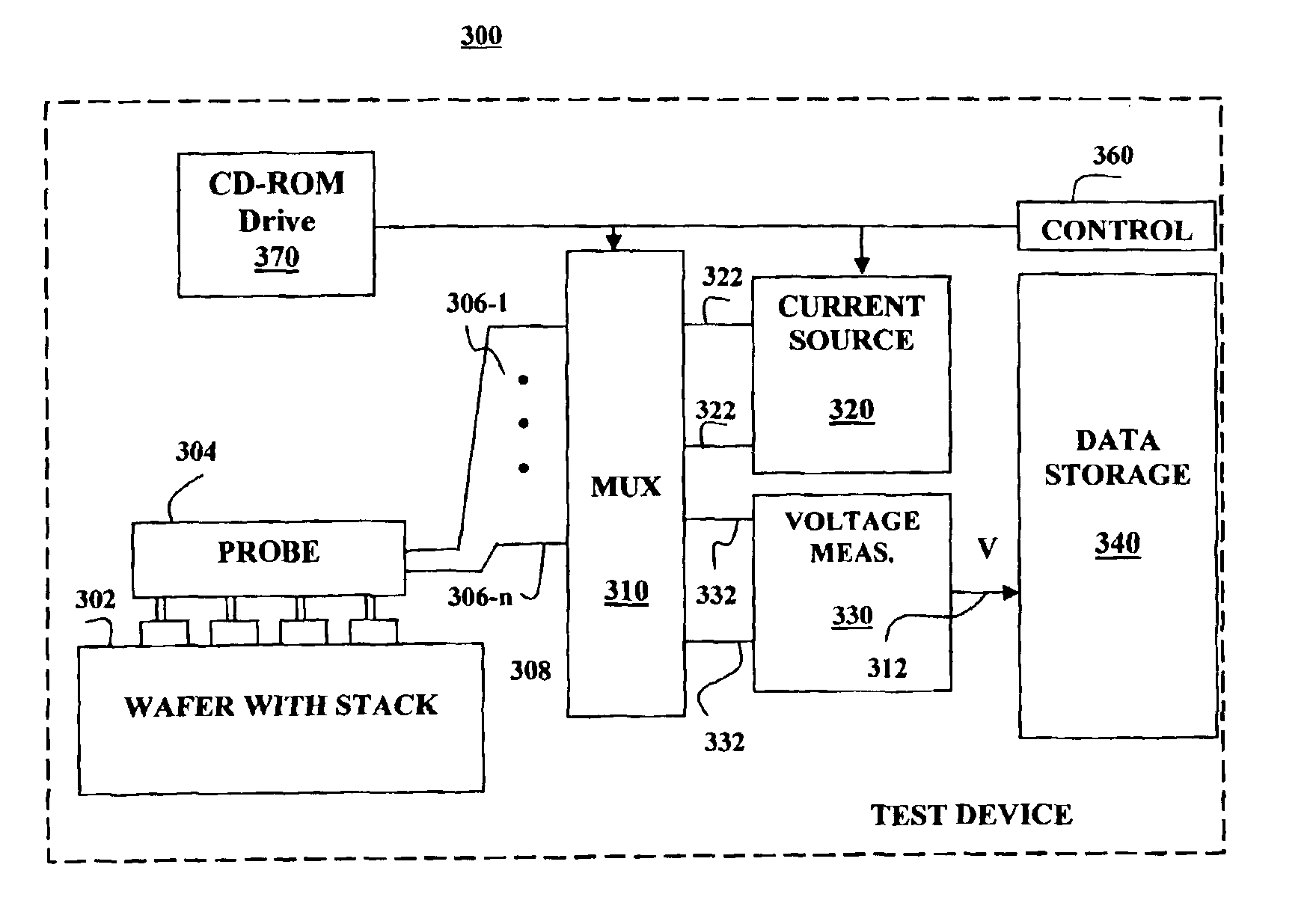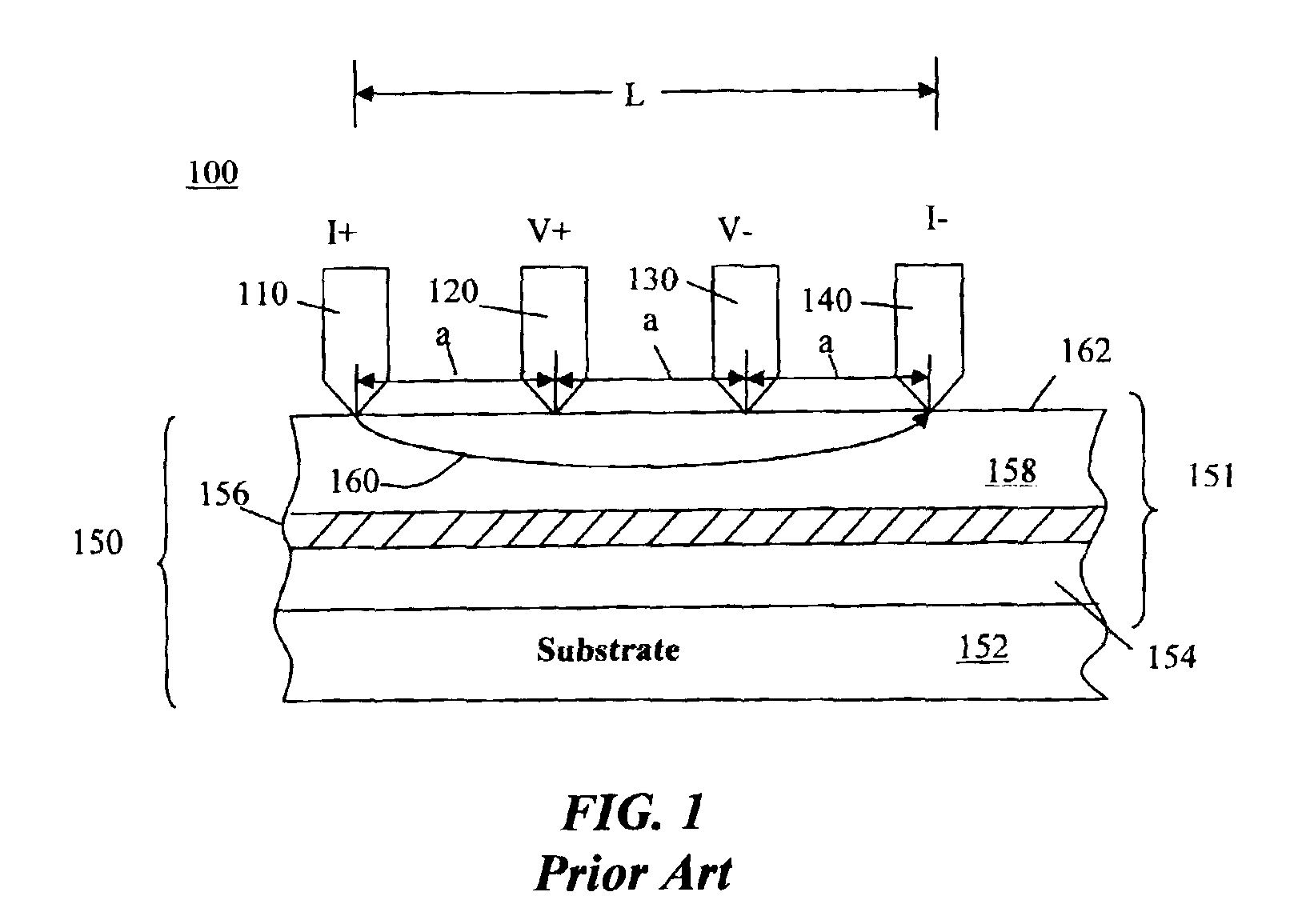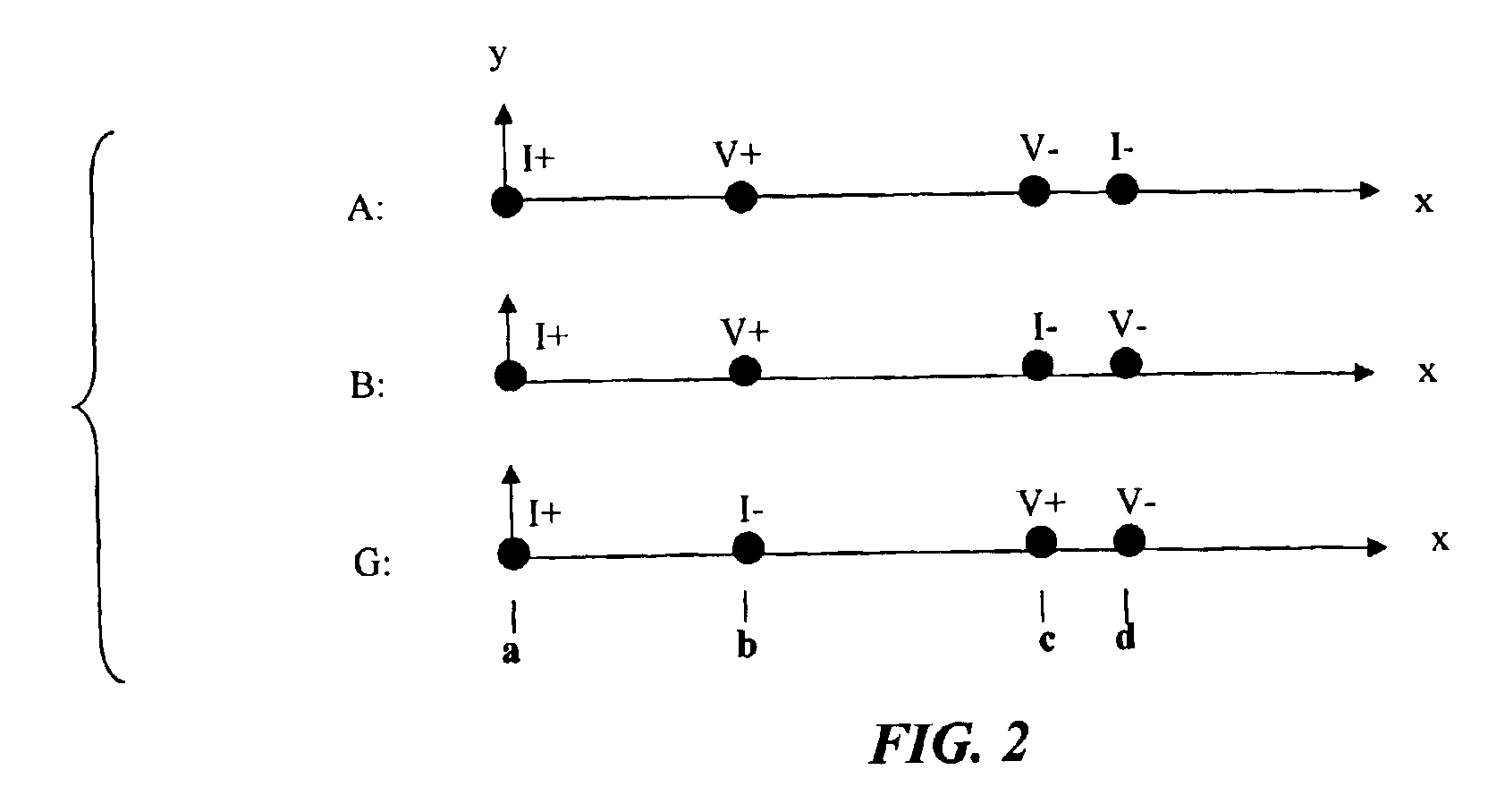Reduction of positional errors in a four point probe resistance measurement
a technology of resistance measurement and positional error reduction, which is applied in the direction of resistance/reactance/impedence, instruments, measurement devices, etc., can solve the problems of resistivity measurement errors, and achieve the effect of reducing the measurement errors resulting from the positioning of the prob
- Summary
- Abstract
- Description
- Claims
- Application Information
AI Technical Summary
Benefits of technology
Problems solved by technology
Method used
Image
Examples
Embodiment Construction
[0019]According to an embodiment of the invention, a method for measuring a resistance per square, R□, of a material (e.g., a semiconductor wafer) uses a four-point probe such as the one depicted in FIG. 1 for making a plurality of resistance measurements we shall call A, B, and G to eliminate errors due to the positions of the probe points. The method implements an algorithm comprising making two or more measurements, each using a different combination of probe electrodes and then using a known relationship to determine a resistance per square that eliminates measurement errors resulting from positioning of the probes.
[0020]The resistivity measurement commences by bringing the contact points (such as those shown in FIG. 1 and identified with numerals 110-140) into contact with a surface of a wafer or sheet material 150 to be measured. FIG. 2 shows a series of resistance measurements A, B, and G made on a set of four points a, b, c, and d that are located in the interior of the mate...
PUM
 Login to View More
Login to View More Abstract
Description
Claims
Application Information
 Login to View More
Login to View More - R&D
- Intellectual Property
- Life Sciences
- Materials
- Tech Scout
- Unparalleled Data Quality
- Higher Quality Content
- 60% Fewer Hallucinations
Browse by: Latest US Patents, China's latest patents, Technical Efficacy Thesaurus, Application Domain, Technology Topic, Popular Technical Reports.
© 2025 PatSnap. All rights reserved.Legal|Privacy policy|Modern Slavery Act Transparency Statement|Sitemap|About US| Contact US: help@patsnap.com



